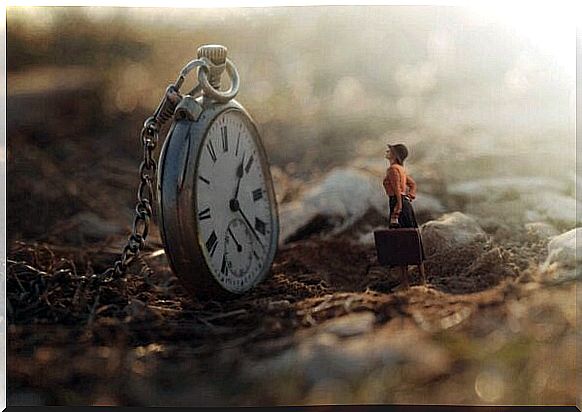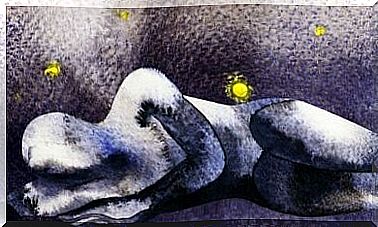Timeline: A Neurolinguistic Tool To Get To Know Yourself Better

You are seldom aware of your subjective perception of time, but it is always there. In fact, it is important for you to build and give context to your identity, life story and project your own future. Furthermore, by discovering how you represent time on a mental level, you can heal your past and reduce uncertainty about your future. The timeline is a powerful tool to accomplish this.
When you remember your first day of school, you not only have the certainty that it actually happened; you also know that this event no longer takes place in the present. In the same way, when you imagine yourself five years from now, you realize that this reality has not yet come.
The timeline
The timeline is a commonly used technique in neurolinguistic programming. You may not have heard of this approach to personal development. However, the goal is to help you reprogram any thought patterns and behaviors you may have that are dysfunctional.
In fact, the timeline is a resource for exploring what kinds of events, ideas, and limitations are preventing you from moving forward satisfactorily.
Your way of thinking, feeling and acting did not come from nowhere. In fact, they are largely the result of your previous learning. Furthermore , what you experienced, and how you process it today, continues to influence your current attitudes and decisions and your perception of the future.
The timeline gives you access to the information that continues to work on your unconscious, and allows you to change it if necessary. For example, it can help you reduce the intensity of pain associated with a negative memory.

What does your own timeline look like?
It is important to emphasize that with this tool, your timeline is not created, but it is discovered. This is because this temporal notion is already ingrained in you, and you use it to organize your experiences. In fact, it is quite similar to the boards many offices have for sorting pending tasks in chronological order.
The timeline technique requires you to become more aware of your own timeline. As an example, before continuing to read, follow these steps:
- Close your eyes and imagine that you are eating breakfast. Observe the elements, colors, perceive the sounds and smells… Enjoy this picture.
- Think of yourself as having breakfast five years ago. Where in the room would you place that scene? In other words, on the physical plane, where is the image located with respect to you?
- Continue. Imagine having breakfast three years ago, six months ago, yesterday… and see where you perceive these scenes on your own timeline.
- Do the same with the future. Think of yourself having breakfast tomorrow, in two months, in four years… What position do these pictures occupy on your timeline?
Main types of timelines
Although each person is different, the exercise above usually gives two results for most people. Consequently, we can describe two types of timelines:
- Throughout history. In this case, the person perceives his timeline as an external observer. The present is in front, the past on the left, and the right represents the future.
- In the time. These people have a perception that their timeline is going through them. In this way, their own body reflects the present, while the past is arranged backwards and the future is placed in front of them.

How to work with this tool?
The timeline is a tool for self-discovery. Therefore, the results of the previous exercise will help you get to know yourself better and find your unconscious tendencies.
For example, people who draw their line “through time” tend to be more thoughtful and better able to put past and future in perspective. On the other hand, those who perceive it “in time” are more likely to live in the present. This means that it can be difficult for them to distance themselves from events and be objective when judging them.
Additionally , you can detect other issues by analyzing your timeline. For example:
- If the past is too close to you in a spatial perspective and the future is too far away, you may need to work on certain events that were untreated and that are still intrusive.
- It’s not just the position of events on your timeline that gives you clues. There are other nuances. For example, if you perceive the past or the future as dark, opaque, gloomy, and without light, you need to work on these thoughts. Maybe some past events may continue to hurt you deeply, or that your future looks bleak.
- If you are not able to project the future clearly, you can work by setting goals and changing your ideas about uncertainty in a way that helps you move forward with enthusiasm and meaning.
In short, this is a simple, fast and effective method of influencing your past, present and future inside. In this way, the changes in your attitude and in your reality are reflected. Furthermore, any deviation in the spatial-temporal arrangement of the images can be a good starting point to work with.









